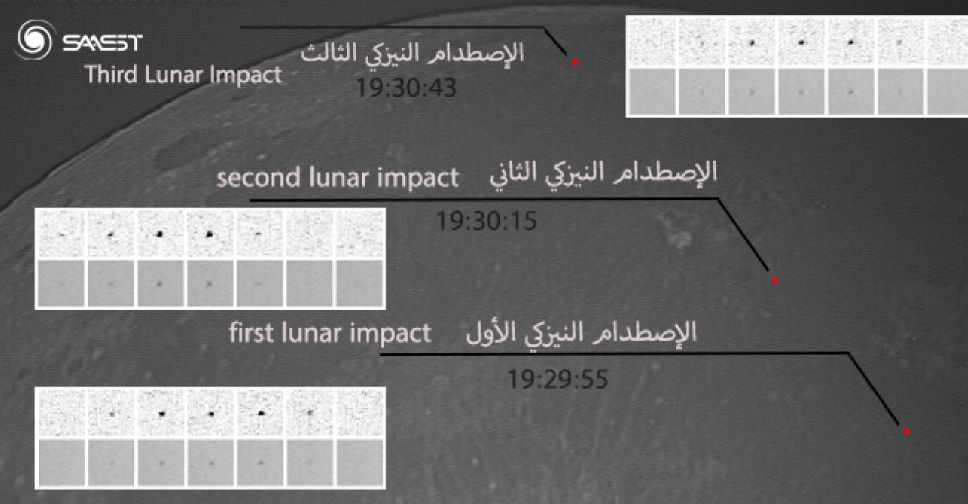
Unusual activity in lunar impacts, creating rapid flashes of bright light, has been detected by the Sharjah Astronomical Observatory.
Teams from Sharjah University’s Academy for Astronomy, Space Sciences and Technology (SAASST) carried out the research.
They found that the impacts, caused by large meteors hitting the moon’s surface, were unusually rapid, long and bright.
The Sharjah Lunar Impacts Observatory Telescope (SLIO) was used to detect the phenomena, which created craters ranging in diameter from 5 to 10 metres.
The device consists of a three-metre-high dome equipped with a 14-inch Meade telescope and many sensitive instruments.
Professor Hamid M.K. Al Naimiy, Chancellor of the University of Sharjah, General Director of SAASST, and President of the Arab Union for Astronomy and Space Sciences, stressed the importance of the SLIO telescope because it's conducting ground monitoring on the dark side of the moon to determine the rates and size of large meteoroids on its surface.
This enhances the understanding of the lunar impacts’ effects, which in turn helps to protect and facilitate manned space missions.
Monitoring the phenomena also helps to determine how craters form over billions of years.
The University Chancellor affirmed that SAASST, thanks to the generous and continuous support of the Ruler of Sharjah, has confirmed its scientific capabilities through this achievement.
The Observatory is the first in the Middle East dedicated to these studies and is collaborating with the European Space Agency on the research.




 UAE President receives official welcome at Presidential Palace in Nicosia
UAE President receives official welcome at Presidential Palace in Nicosia
 Rain hits parts of UAE: Dubai Police issues public safety SMS alerts
Rain hits parts of UAE: Dubai Police issues public safety SMS alerts
 UAE condemns terrorist shooting at Bondi Beach
UAE condemns terrorist shooting at Bondi Beach
 UAE condemns shooting at Brown University in US
UAE condemns shooting at Brown University in US
